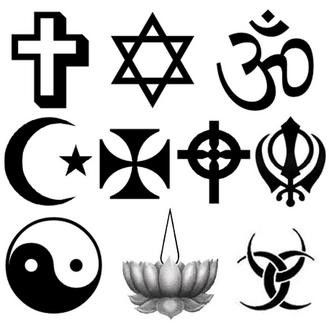Articles features
Will religious census stir up India's political cauldron? (News Analysis)

Lucknow/Patna, Aug 26
Will the religious
census released by the central government on Tuesday stir up India's
political cauldron? Reports from two states with a sizeable Muslim
population suggest that it just could.
In Uttar Pradesh, the
answer seemingly is in the affirmative, fear many, as the already
polarized polity of India's most politically crucial state is set to be
harvested for electoral gains in the run-up to the state assembly
elections due in early 2017.
While most political leaders in
Uttar Pradesh -- including the ones known for competing with their
professional adversaries for quotes and sound bytes -- have refused to
come on record candidly, there is an overwhelming sense in the state
that the "religious census will precipitate into a politics-based on
religious lines". The Muslim population in the state has grown to 19.8
percent in the last 14 years -- an increase of 0.86 percent.
"The
census on religious lines had been held back for long and we all know
its release has a political statement to it," a Congress leader, not
wishing to be named, told IANS.
He further pointed out that the
fact that the Hindu population had slipped below 80 percent for the
first time -- juxtaposed with the marginal growth of Muslims -- was
"sure to be used by those who play politics of religion".
State
spokesman of the Bharatiya Janata Party (BJP) Vijay Bahadur Pathak,
though not ready for a usual full-length statement, told IANS that the
census had thrown up two things which needed to be immediately tackled
and with all seriousness -- jansankhya niyantran (population control)
and jansankhya santulan (population balance).
"Any and everybody who wishes for development will think in similar fashion," he elaborated.
Eminent
Sunni cleric Maulana Irfan Mian Farangi Mahali saw the release of the
religious census as a "political stunt which will only end up widening
the growing gap between two communities".
"The real issues are
much different like price rise and corruption but such data is sure to
stoke the imagination of political parties," he averred.
Of a
population of 19.98 crore in 2011, Uttar Pradesh now has 15.93 crore
Hindus, 3.84 crore Muslims, 64.35 lakh Sikhs and 35.6 lakh Christians.
The
districts with highest concentration of Muslims are Moradabad,
Muzaffarnagar, Bijnore, Bareilly and Saharanpur. In the sensitive area
of western UP, which has been a communal flash point over the past few
years, in 17 districts the ratio of Hindus and Muslims is very wide and
only Amroha and Rampur have more Muslims.
Senior journalist
Rajiv Ranjan Jha said Uttar Pradesh was a sensitive state and one where
politics revolved around caste and community. "There can be no doubt
that the release of the census would trigger a political chain-reaction
and harvest divisive results," Jha told IANS.
A report from
Patna said that taking Bihar's sizeable Muslim population into
consideration, not only are the RJD, the JD-U and Congress eyeing their
support, but even the BJP is also trying to gain their support ahead of
the assembly polls expected in October.
"No political party can ignore this sizeable population in view of the coming polls," social activist Nayiar Fatmi told IANS.
Soroor
Ahmad, a socio-political analyst, said the Muslim population is the
highest in Bihar's most backward pockets with high degree of poverty,
illiteracy and migration.
Muslims in districts like Kishanganj,
Purnea, Araria, Katihar and Supaul -- known as the Seemanchal region as
they share border with Nepal and Bangladesh -- have been playing an
important role in the polls.
Ahmad said that AIMIM president
Asadullah Owaisi recently visited and addressed a public meeting in
Kishanganj to explore possibilities of contesting the Bihar polls.
According to the 2011 census, Bihar's population stood at 10.5 crore, of which 16.5 percent were Muslims.
(Imran Khan contributed to this story. Mohit Dubey can be contacted at mohit.d@ians.in)



































